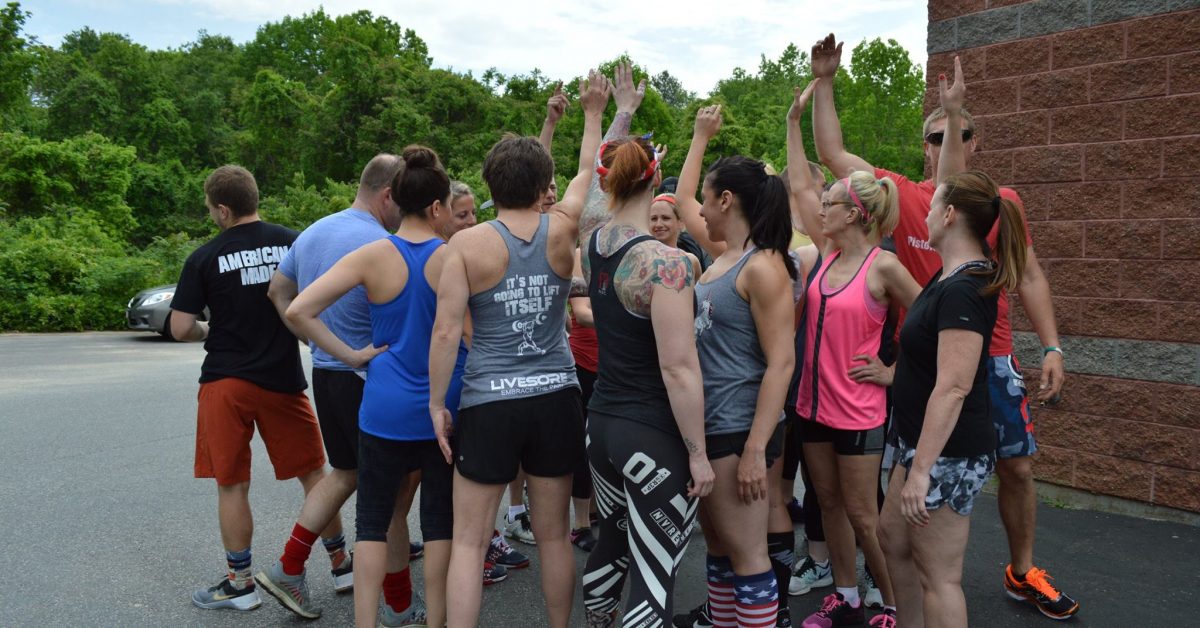One of the criticisms of group training has been the inability to assess and train the individual’s needs. I definitely agree to some extent. But are we all really that different? Does everyone require a different training program? I believe many coaches would answer “yes” to both questions.
What about those that have simple goals like look better, feel better, get stronger, and live longer? Do those individual really require a different training program? Or what about individuals that simply cannot afford the cost associated with having their own training program written for them and go through a one on one assessment? This article is going to talk about what I feel to be the most effective way to set-up group training and make sure everyone is getting some level individualization and reaching their individual goals.
The quote, “If you fail to plan you plan to fail” definitely has its place when it comes to programming. An effective program is one that answers questions such as, prior injuries, training age, goals, ect. before starting. It is also a plan that is systematic and takes into account the needs of most individuals.
An effective training template lays the groundwork for efficient programming makes sure athletes are getting thoughtful training that provides balance and progression. Some considerations when you’re planning the training of a group of individuals:
- General Physical Preparedness (GPP): GPP work is definitely overlooked in many group settings. Loaded carries and sledpulls/pushes are definitely not the sexiest type of training but both have their place and can be used for multiple purposes.
- Foundation: GPP work is a great way to build peoples bases whether you’re a seasoned trainee or beginner, GPP is relatively low-skill and non-invasive. With that said, GPP work is a great form of recovery work. Imagine how you feel the day after performing a high volume, heavy lower body session. Does your body really want to incur more external loading in an already fatigued state? For the average athlete probably not. This is a great opportunity to facilitate recovery while still getting in an efficient training session. On top of that, GPP work can provide an aerobic effect as well seeing most activities illicit a heart-rate of 60-70% of MHR which will further help to facilitate recovery.
- Strength Purposes: Some athletes may not be ready to load the barbell for a back squat session or might not have efficient motor patterns yet to safely use heavier loading. A great way to provide a similar stimulus is by loading a heavy sled and power walking with it for 5-10 sets x 50-60 yards each.
- Prior injuries: There are many people that have nagging injuries that may be exacerbated by barbell work. GPP work can provide a great alternative for those individuals.
2) Unilateral Work: Let’s face it we all have imbalances. Even the best athletes are not completely balanced. This begs the question: why does most group-training involve movements that work both limbs simultaneously? Unilateral work can be done regularly and help improve an athletes health, their lifts as well as their muscle mass. Triple win!
3) Structure: What movements patterns occur on what days and how is recovery built in? We can’t constantly train the same movements patterns and not run into issues. Back to the planning part of this article, when you lay out a week of training what do you see? Are there patterns? Same movement patterns for consecutive days? Try to look at the week from an objective point of view and see if you notice any limitations to what you have planned.
4) End Goal(s): Most coaches want the obvious things for their athletes: improvement across the board whether it be with your max deadlift or pant size. Helping individuals arrive at a better version of themselves is a great, but broad end goal for those training in a group setting. In a group setting, periodization, where an athlete is trying to systematically “peak” for an upcoming competition, doesn’t really exist. We just want to get better on a continuous basis. Below is a template that covers all of our bases and makes sure that we are providing our athletes with effective and safe training while improving upon their individual limiting factors. This training template is based off a 6 day schedule/60 minute training session.
Monday
-Heavy Lower Body Focus. Volume is low, the intensity is high. Variations rotate weekly.
-Conditioning Piece: Higher threshold. Think of these pieces your higher intensity typically with a work to rest component that allows for near-complete recovery.
– 1-2 Assistance Exercises for primary movers that day that includes core work. Band Work Volume Accumulate or Reverse Hypers also fit the bill here.
Tuesday
-GPP Work or Special Exercise work: Sled Pushes + Loaded Carries, strongman elements, ect. The focus will rotate, but on these days you may see some type of “finisher” that is less demanding but gives athletes the ability to work unilaterally/hypertrophy work. If there is GPP piece this will usually occur prior to our longer/slower conditioning work. Depending on the conditioning piece GPP work may be part of the conditioning.
– Conditioning: Aerobic Power Work where the focus is trying to improve athletes endurance through the long duration with moderate intensity work through continuous movement. This is moderate intensity at about 75% of max heart rate. There may or may not be a work/rest component here.
– Band Work Tendon Work (accumulation of volume)
Wednesday
-Upper Body Focused Training Session. Moving submaximal (high volume) loads for maximum velocity for 2 weeks. These two modalities will rotate but a whole list of upper body variations and Olympic Variations fit the bill here.
-Conditioning: Moderate intensity conditioning piece (75-85% of Max Heart-rate) which can be performed mix modal or cyclical. Athletes will typically be working on sustaining work output, monitoring breathing/pacing. 10-15 minute Time Domain Triplets fit the bill here.
-1-2 assistance exercises for primary movers or Band Tendon Volume Accumulation
Thursday
-Active Recovery Based/Aerobic Work/Bodyweight
– Non-Invasive skill work
– Possible GPP component in the form of sled pushes or pulls or loaded carries.
Friday
-Lower body with speed emphasis ie. Box Squats, Speed Deadlifts, Olympic Variations
– Conditioning: Higher threshold piece comparable to Monday’s conditioning. A conditioning piece like “Fran” or “Grace” may fit the bill here and will be capped at 7 minutes or less.
– Band Work Volume Accumulate or Reverse Hypers
Saturday
– Fun Conditioning piece typically was done in teams of 2 or 3. Typically partner pieces will allow for built-in rest, but the stimulus will be similar to that of Tuesday as these tend to be longer in nature (20 minutes or more).
Sunday
OFF or Active Recovery Measures
There you have it. A full weekly plan where any athlete of any level can make consistent progress as well as improve body composition/limiting factors. Keeping people healthy is our goal and as coaches, we need to ensure that we are putting our athletes in the best possible position. Thank you for reading!


